Carriers for thermonuclear bomb B61 Mod 12
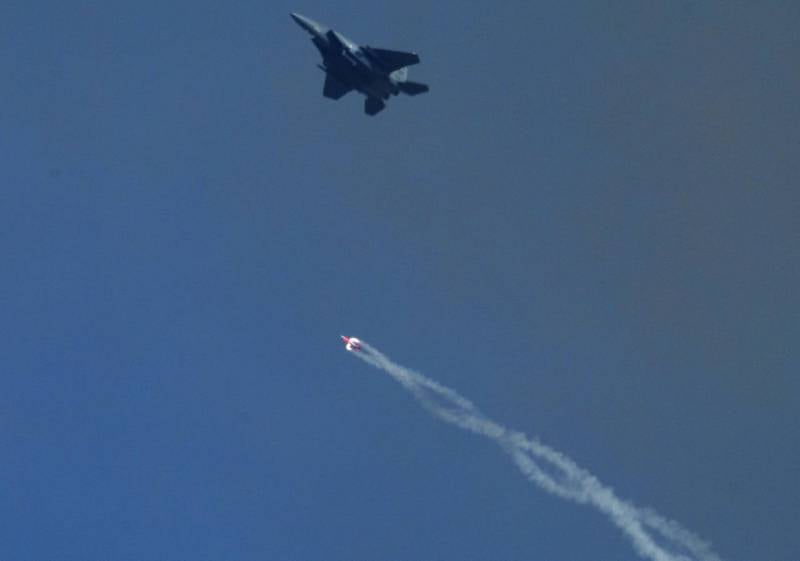
Test drop of a B61 Mod 12 bomb by an F-15E
Not long ago, a new tactical thermonuclear weapon was developed for the US Air Force. aviation bomb B61 Mod 12. This product has been successfully brought to mass production and is now entering arsenals and combat units. Recently, the first information about the deployment of new ammunition and its standard carriers became publicly available. It turned out that the process of mastering the B61-12 bomb among the troops is far from being completed.
Way to the troops
The basic version of the B61 thermonuclear bomb was adopted by US combat aircraft in the early sixties, and a number of modifications with different features and functions were subsequently developed. At the beginning of the tenth years, work began on the next, already 12th, modification of this ammunition. It was planned to be carried out using components from previous versions of the B61 and new components. It was assumed that the resulting B61 Mod 12 could replace several older products.
The project was not complicated, but its development faced opposition from congressmen. However, in 2015, the first flight tests of a prototype of a promising bomb took place, and in 2017-18. discharges of a full-fledged experimental product in an inert design began. All necessary tests using various equipment continued until 2020-21. and were considered successful.
In 2021, the Pentagon issued an order for the production of B61-12 bombs - they proposed rebuilding existing ammunition from one of the previous modifications. The first batch of this weapons, made using serial technologies, was handed over to the customer in November 2021. At the same time, the products began to be distributed among arsenals and combat units authorized to operate and use such weapons.
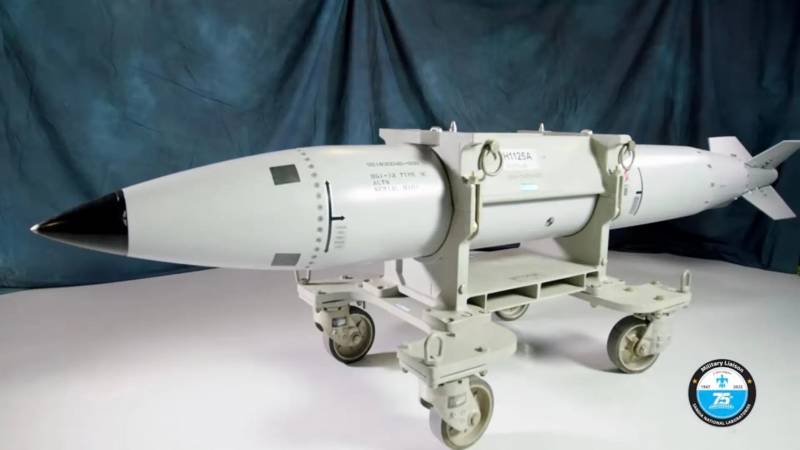
Product B61-12
During the tests, experimental bombs were used by F-15E fighter-bombers from the fleet of training and test units. To be compatible with the new weapon, they received a software update for the sighting and navigation system.
In the process of being deployed
The B61 Mod 12 bomb was developed taking into account further deployment on various carriers available to the US Air Force and friendly countries involved in duty with nuclear weapons. At the same time, plans for the development of aviation and the gradual abandonment of obsolete models of equipment were taken into account.
On November 27, the National Nuclear Security Administration (NNSA) of the US Department of Energy submitted to Congress and published its annual report “Stockpile Stewardship and Management Plan”. The document describes the current state of the Pentagon's strategic and non-strategic nuclear forces, and also reveals plans for their development in the current fiscal year, which started on October 1.
The report mentions the new B61-12 aerial bomb several times, and the most interesting information is about its deployment and the carriers used. Reportedly, this product has now become a standard weapon of the US Air Force and is used in relevant duty programs. However, it is ready for use with only one carrier in the form of the B-2A bomber.
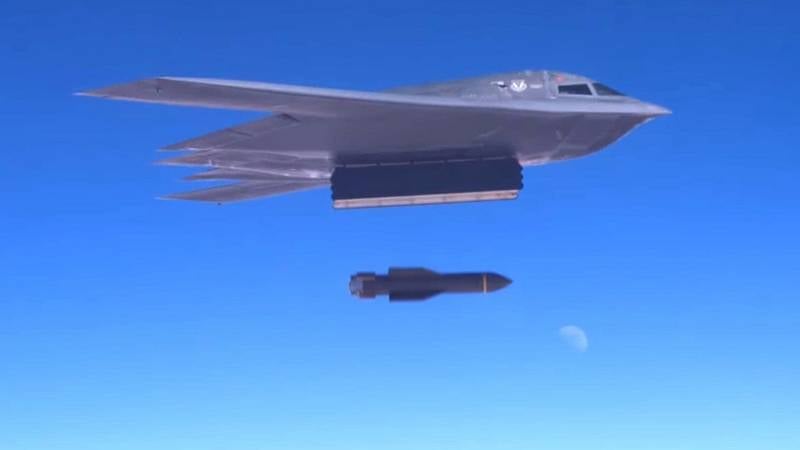
A B-2 bomber drops a heavy bomb
It is reported that work is being carried out to prepare for the use of the bomb by promising B-21 bombers. These activities will create an operational basis for the next few decades, but their results will appear only in a few years - when the B-21 passes all the necessary tests and enters service.
Why the deployment of a tactical thermonuclear bomb began with strategic aviation is unknown. However, tactical aviation will also soon master the new B61-12. The Air Force will add the bomb to its F-15E fighter-bombers during the new fiscal year. Aircraft of this type have been used in past tests, and adaptation of combat aircraft will not cause difficulties.
Another tactical carrier for the B61-12 will be the F-35A fighter, but this will happen later. The F-35A Block 4 version of the aircraft will be able to use the thermonuclear bomb, but it is not ready yet. This project will be able to be implemented only after completion of work on the current modification of Block 3 TR-3. So far, the Pentagon is not confident that all these activities will be completed before the end of the 2024 fiscal or calendar year.
The situation with the F-16 fighters is interesting. The Pentagon is going to integrate the B61 Mod 12 bomb into their weapons system, but we are not talking about aircraft of all modifications. The avionics of F-16C/D aircraft or later versions will be able to interact with ammunition devices. This meets the needs and capabilities of the US Air Force and allows them to expand the range of carriers of the new bomb. At the same time, several European countries participating in the joint thermonuclear bomb program operate older F-16A/B fighters and risk being left out of business.
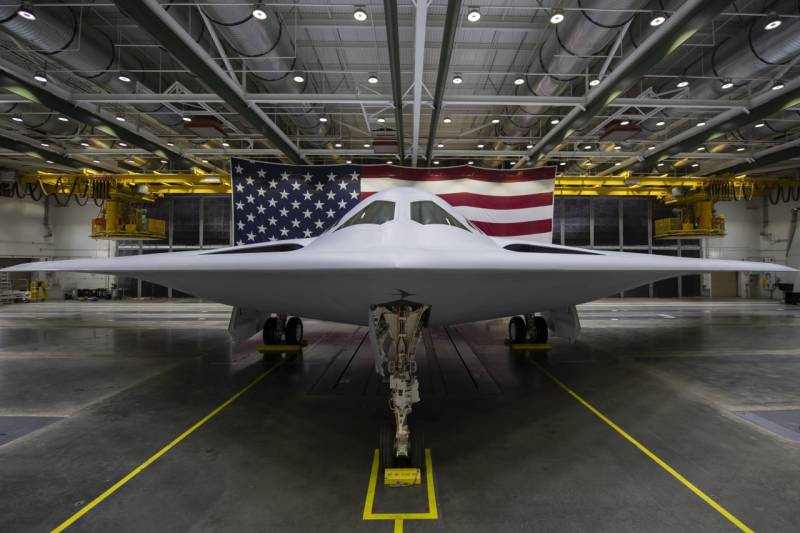
B-21 - future carrier of B61-12
One of the carriers of B61 bombs of older modifications is the European Panavia Tornado bomber, which is available in several countries. He too will not be able to use the new Mod 12, and no measures are planned to integrate it.
Thus, the B61-12 bomb was created as a modern weapon with increased power, and therefore will only be used with modern or future carrier aircraft. At the same time, obsolete models are no longer considered in such a role, and the Pentagon is not going to waste effort, time and money on adapting the bomb and obsolete fighters to each other. This decision is quite understandable and logical. The loss of some potential carriers in the form of aircraft from European countries is not a significant problem or difficulty.
Fusion potential
The B61 Mod 12 is another representative of a fairly large and old family of thermonuclear aerial bombs of the tactical and strategic class. It was developed on the basis of one of the previous modifications of the B61, retaining a number of key components, which were supplemented with new devices and units.
The Mod 12 version bomb retained the standard streamlined body of the entire family with a length of 3,6 m and a diameter of 340 mm. Weight – approx. 325 kg. The head and central parts of the body are given over to the main charge and means of its detonation. The product also received a new tail section with a guidance system and X-shaped rudders. Solid propellant boosters are also located in the tail section, ensuring the bomb spins around its longitudinal axis for stabilization in flight.
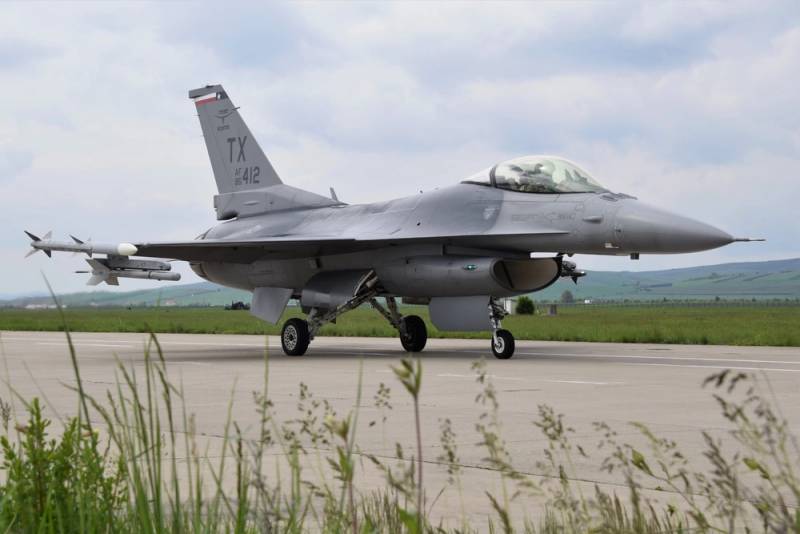
US Air Force F-16C. Earlier modifications of this aircraft will not be able to use the B61-12
In the production of B61-12, warheads from Mod 4 bombs being removed from storage are used. This is a compact and lightweight nuclear weapon with a variable detonation power: four installations are provided from 0,3 to 50 kt. In terms of power, the new bomb is seriously inferior to a number of previous modifications, but it is claimed to achieve high combat qualities due to increased accuracy.
A new tail section with control devices was developed for the B61-12. The bomb tracks its position in space and its trajectory using satellite and inertial navigation, and the autopilot issues commands to the steering gears. The stated QUO is no more than a few meters. The use of homing heads with the ability to search and track a target is not provided.
The long-awaited result
Work on creating a new modification of the B61 aerial bomb started about 10 years ago, but due to various reasons and factors it was significantly delayed. However, to date, the Pentagon, NNSA and their contractors have completed the development and testing of the B61-12 product and launched mass production. Now the process of introducing these weapons into the Air Force and integrating them into the weapon systems of combat aircraft is underway.
According to the latest documents, to date only one aircraft, and a strategic one, has received a new tactical thermonuclear bomb. However, in the foreseeable future the list of B61-12 carriers should expand. Relevant plans have been drawn up and are being implemented. Work in this direction may encounter certain problems and difficulties, but in general the Pentagon is happy with the situation. Despite all the delays, he gets the desired result of a promising project.
Information